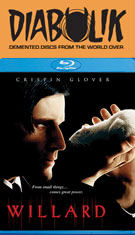
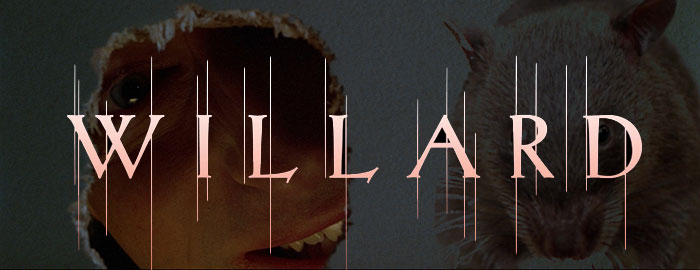
Color, 2003, 100 mins. 29 secs.
Directed by Glen Morgan
Starring Crispin Glover, R. Lee Ermey, Laura Elena Harring, Jackie Burroughs
Scream Factory (Blu-ray) (US RA HD), Warner Bros. (DVD) (US R1 NTSC, UK R2 PAL) / WS (2.35:1) (16:9)


Color, 2003, 100 mins. 29 secs.
Directed by Glen Morgan
Starring Crispin Glover, R. Lee Ermey, Laura Elena Harring, Jackie Burroughs
Scream Factory (Blu-ray) (US RA HD), Warner Bros. (DVD) (US R1 NTSC, UK R2 PAL) / WS (2.35:1) (16:9)
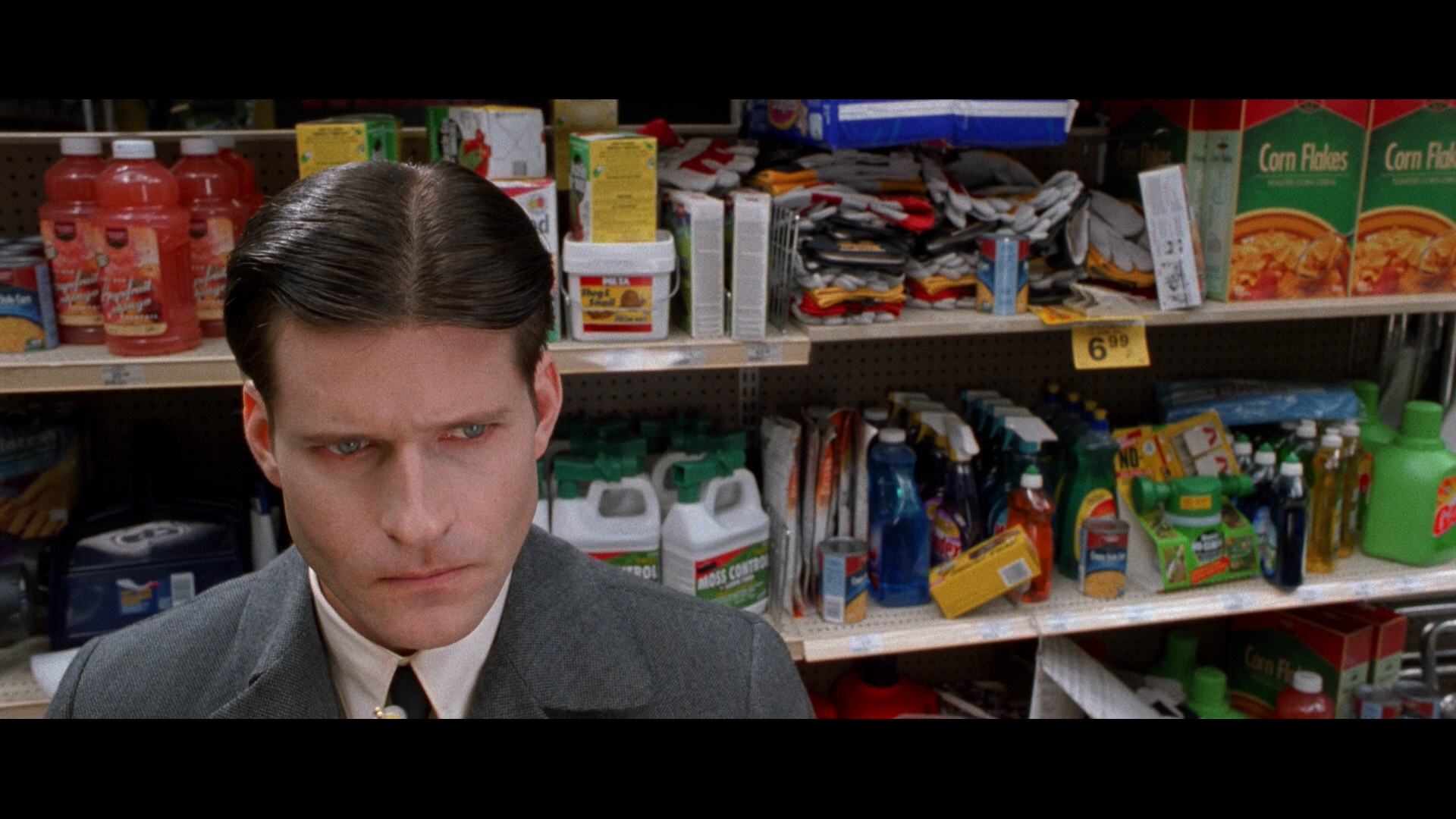 massive success of TV's The X-Files gave a major career boost
massive success of TV's The X-Files gave a major career boost 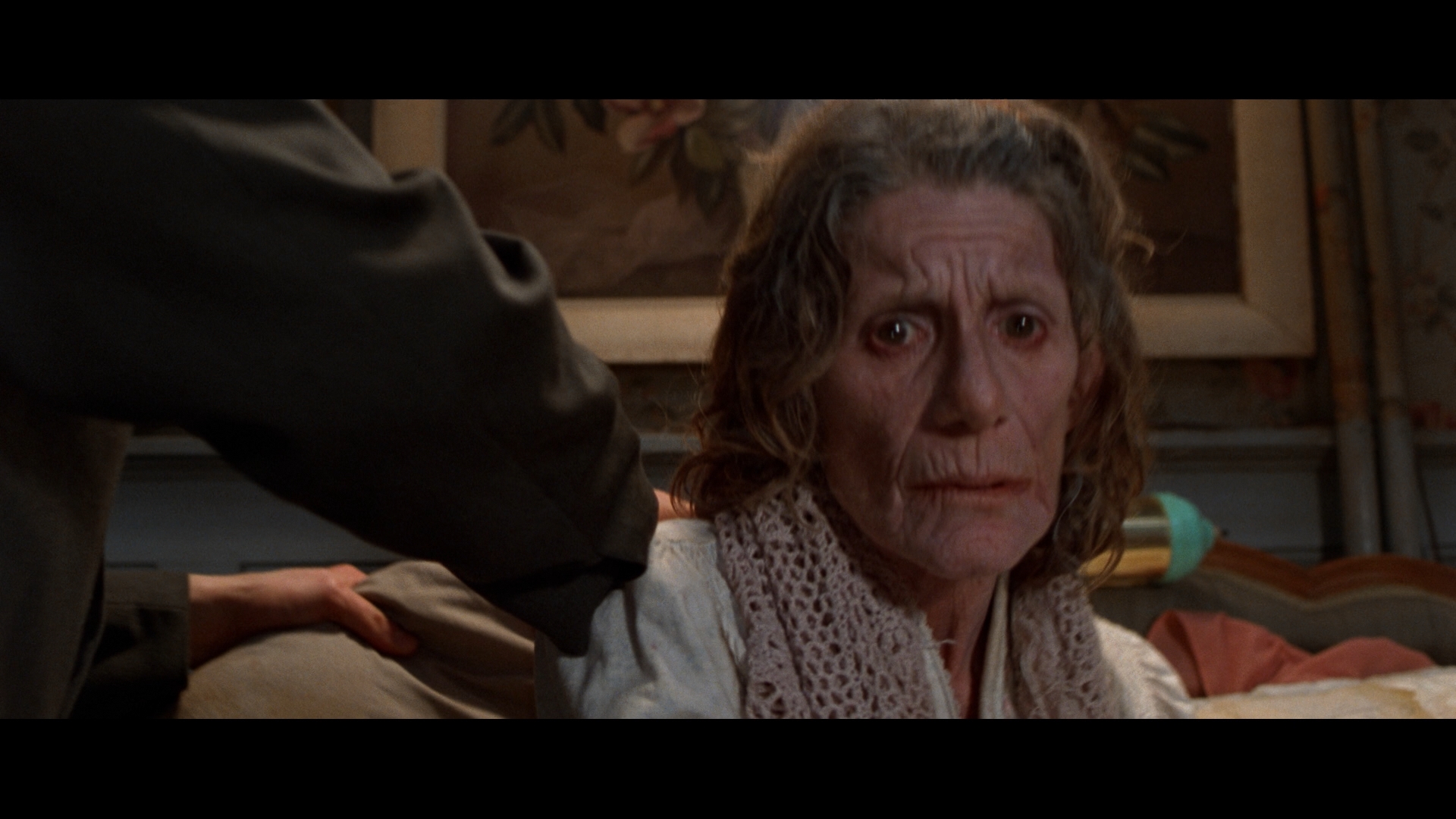 to many of the people in front of and behind the camera, with writer-producer Glen Morgan joining the ranks of others like David Nutter and creator Chris Carter in shots at major studio theatrical releases. Morgan's first choice as a feature writer and director turned out to be an unexpected one: 2003's Willard, a remake of the landmark animal attack horror film from 1971 (itself an adaptation of Stephen Gilbert's novel, Ratman's Notebooks). While the first film cast Bruce Davison as a very plain, unassuming underdog and is set very much in a realistic Los Angeles, Morgan's version amps up the quirk factor considerably with heavy inspiration from Tim Burton and a headlining performance by Hollywood's leading eccentric thespian, Crispin Glover. Surprisingly, the idea turned out to be a solid one and the film became a modest cult favorite; unfortunately Morgan didn't fare so well with his second (and, to date, final) film, a remake of Black Christmas that was plagued by massive studio tampering but has since gone on to be reevaluated as well.
to many of the people in front of and behind the camera, with writer-producer Glen Morgan joining the ranks of others like David Nutter and creator Chris Carter in shots at major studio theatrical releases. Morgan's first choice as a feature writer and director turned out to be an unexpected one: 2003's Willard, a remake of the landmark animal attack horror film from 1971 (itself an adaptation of Stephen Gilbert's novel, Ratman's Notebooks). While the first film cast Bruce Davison as a very plain, unassuming underdog and is set very much in a realistic Los Angeles, Morgan's version amps up the quirk factor considerably with heavy inspiration from Tim Burton and a headlining performance by Hollywood's leading eccentric thespian, Crispin Glover. Surprisingly, the idea turned out to be a solid one and the film became a modest cult favorite; unfortunately Morgan didn't fare so well with his second (and, to date, final) film, a remake of Black Christmas that was plagued by massive studio tampering but has since gone on to be reevaluated as well. 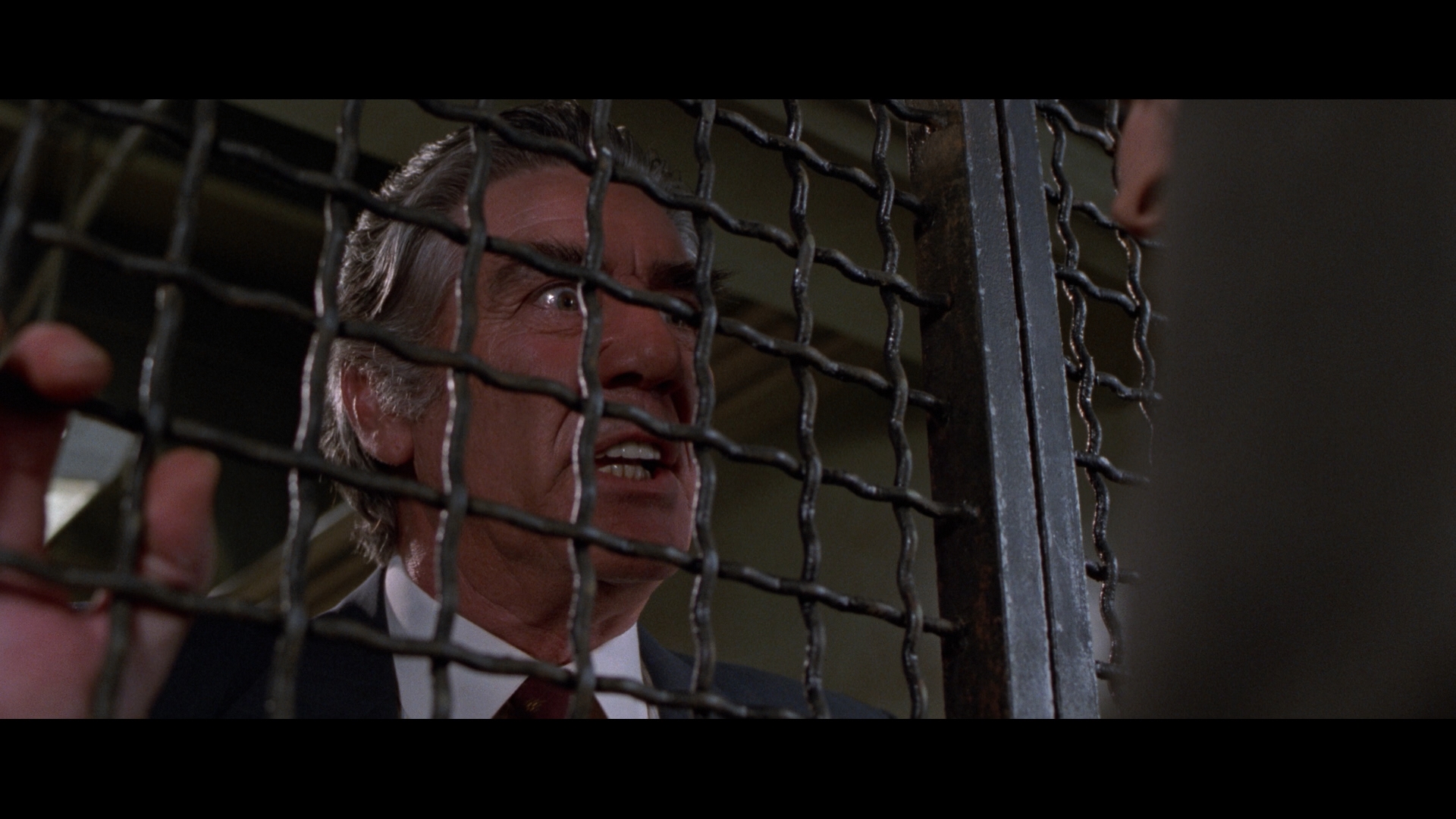 attachment to a colony of rats living on the premises of Willard's antiquated mansion home. As it turns out, Willard can communicate with the rats,
attachment to a colony of rats living on the premises of Willard's antiquated mansion home. As it turns out, Willard can communicate with the rats, 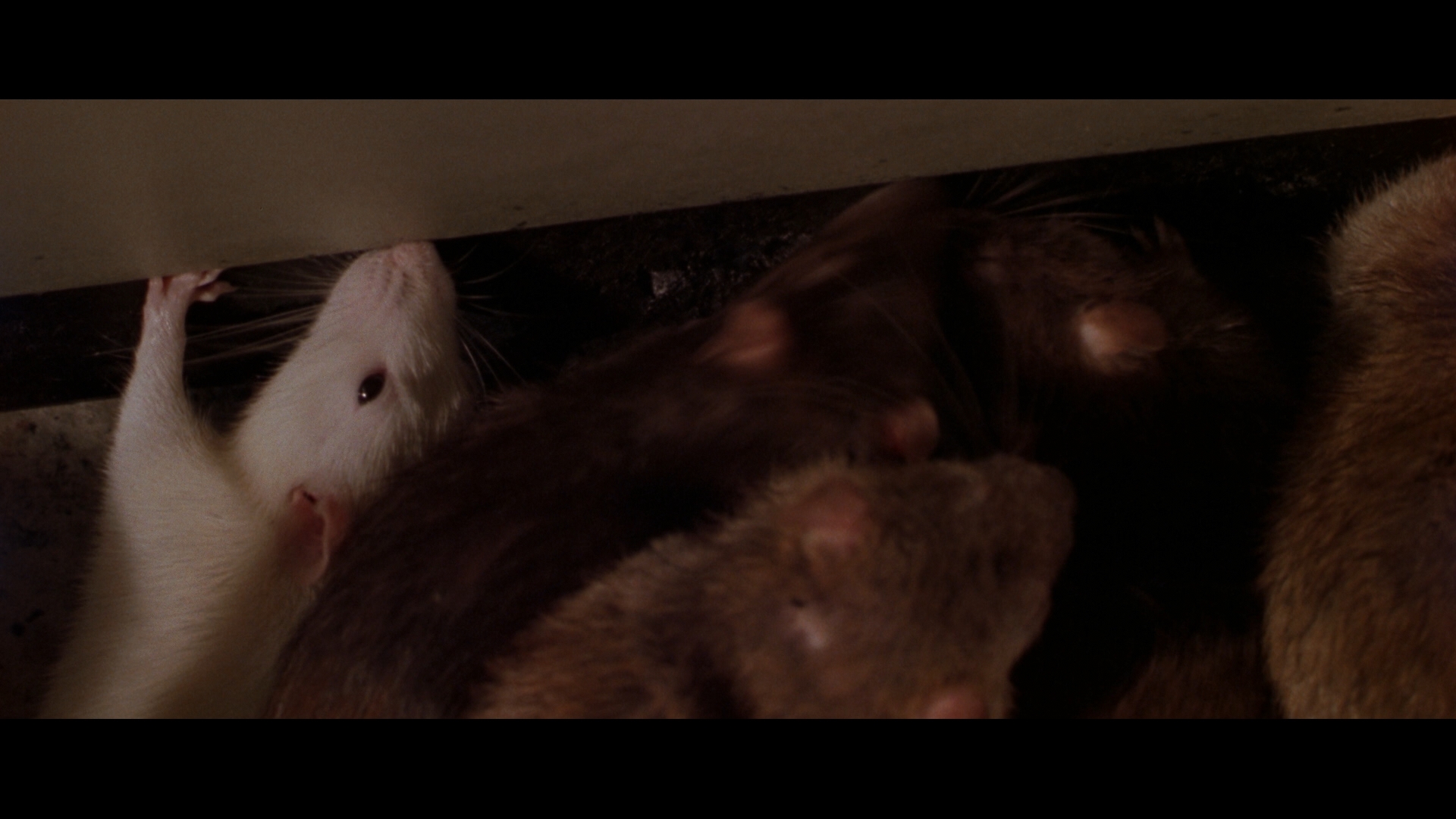 particularly Socrates (his favorite) and the larger, more commanding Ben. Willard soon hatches a plan to get revenge on his tormentors, but it turns out to have some particularly grim consequences.
particularly Socrates (his favorite) and the larger, more commanding Ben. Willard soon hatches a plan to get revenge on his tormentors, but it turns out to have some particularly grim consequences. 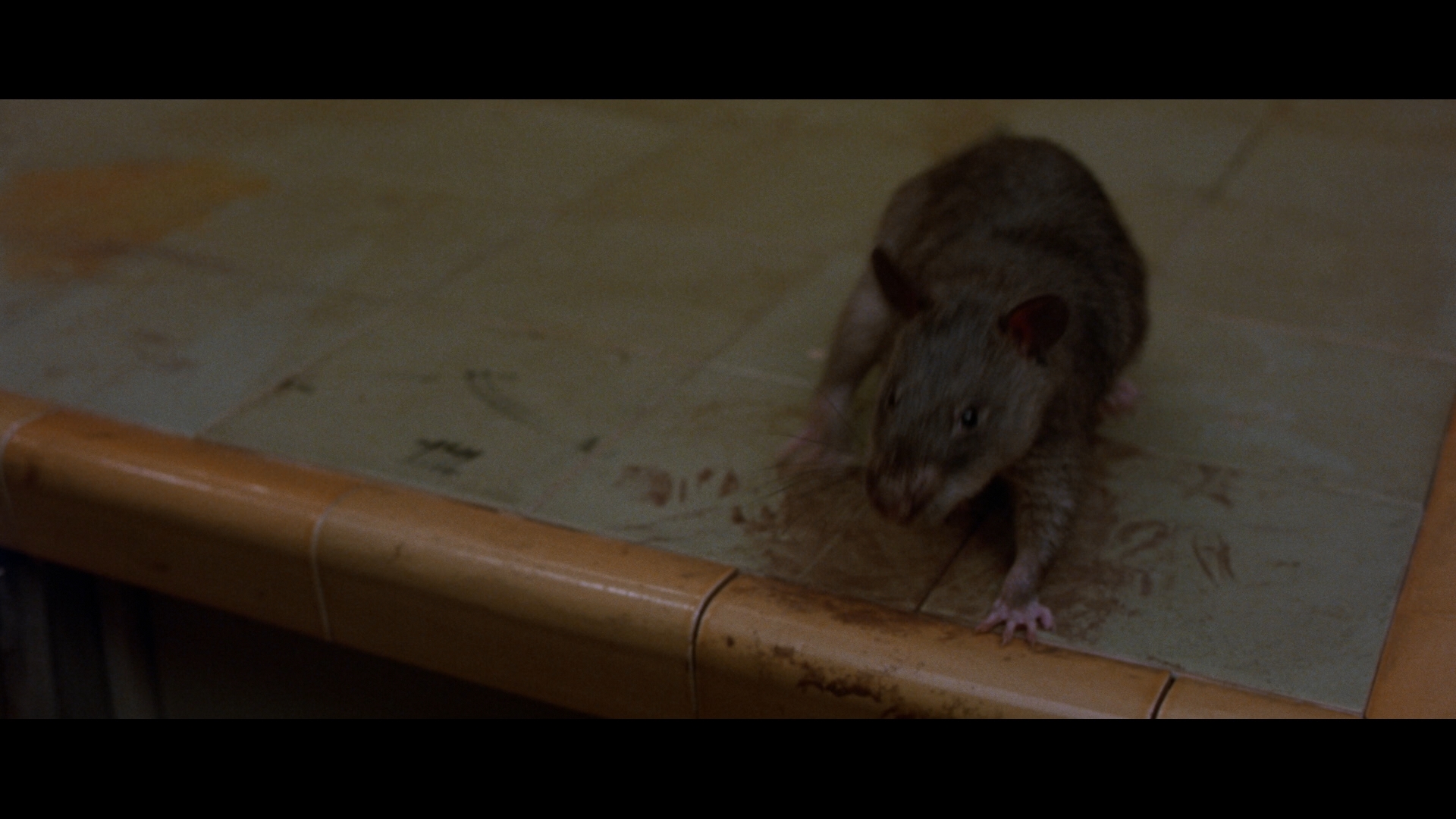 optional
optional 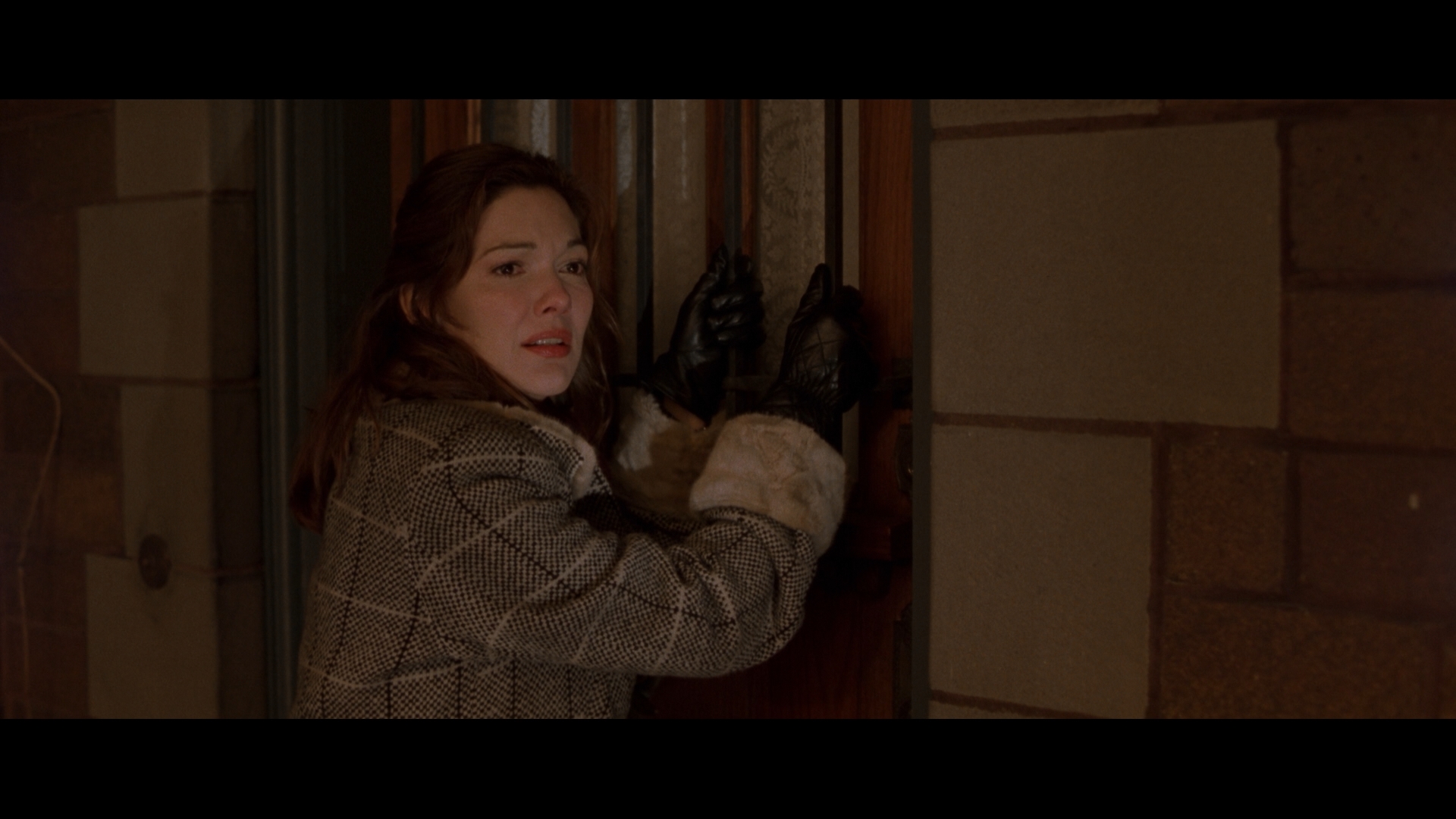 English SDH subtitles) is also solid with particular support given to the score. Ported over from the DVD is an excellent audio commentary with Morgan, producer James Wong, and Glover and Ermey, with lots of stories about the casting, little hidden touches (watch those opening credits), the logistics of working with rats, little plot points that had to be fixed with looping, shots excised from the final cut, and more. However, you also get two new commentaries, kicking off with a new track with Morgan and McLachlan in conversation with Justin Beahm. They're still quite proud of the film and fond of it as they look back with more production stories with a bittersweet perspective and note that they wish they'd kept the film R-rated as originally intended versus the PG-13 it bears now. It's also interesting to hear them in the wake of Black Christmas, which gets quite a few mentions as well. Beahm returns to moderate a really informative and fun commentary with animal trainers Mark Harden and David Allsberry of Animals for Hollywood, who talk about how they got into the business and trained hundreds of rats to do specific tasks on this film ("I could make peanut butter look like anything"). It's quite a change of pace from your usual commentary and a rewarding listen as they share lots of tips about turning animals into movie stars.
English SDH subtitles) is also solid with particular support given to the score. Ported over from the DVD is an excellent audio commentary with Morgan, producer James Wong, and Glover and Ermey, with lots of stories about the casting, little hidden touches (watch those opening credits), the logistics of working with rats, little plot points that had to be fixed with looping, shots excised from the final cut, and more. However, you also get two new commentaries, kicking off with a new track with Morgan and McLachlan in conversation with Justin Beahm. They're still quite proud of the film and fond of it as they look back with more production stories with a bittersweet perspective and note that they wish they'd kept the film R-rated as originally intended versus the PG-13 it bears now. It's also interesting to hear them in the wake of Black Christmas, which gets quite a few mentions as well. Beahm returns to moderate a really informative and fun commentary with animal trainers Mark Harden and David Allsberry of Animals for Hollywood, who talk about how they got into the business and trained hundreds of rats to do specific tasks on this film ("I could make peanut butter look like anything"). It's quite a change of pace from your usual commentary and a rewarding listen as they share lots of tips about turning animals into movie stars. 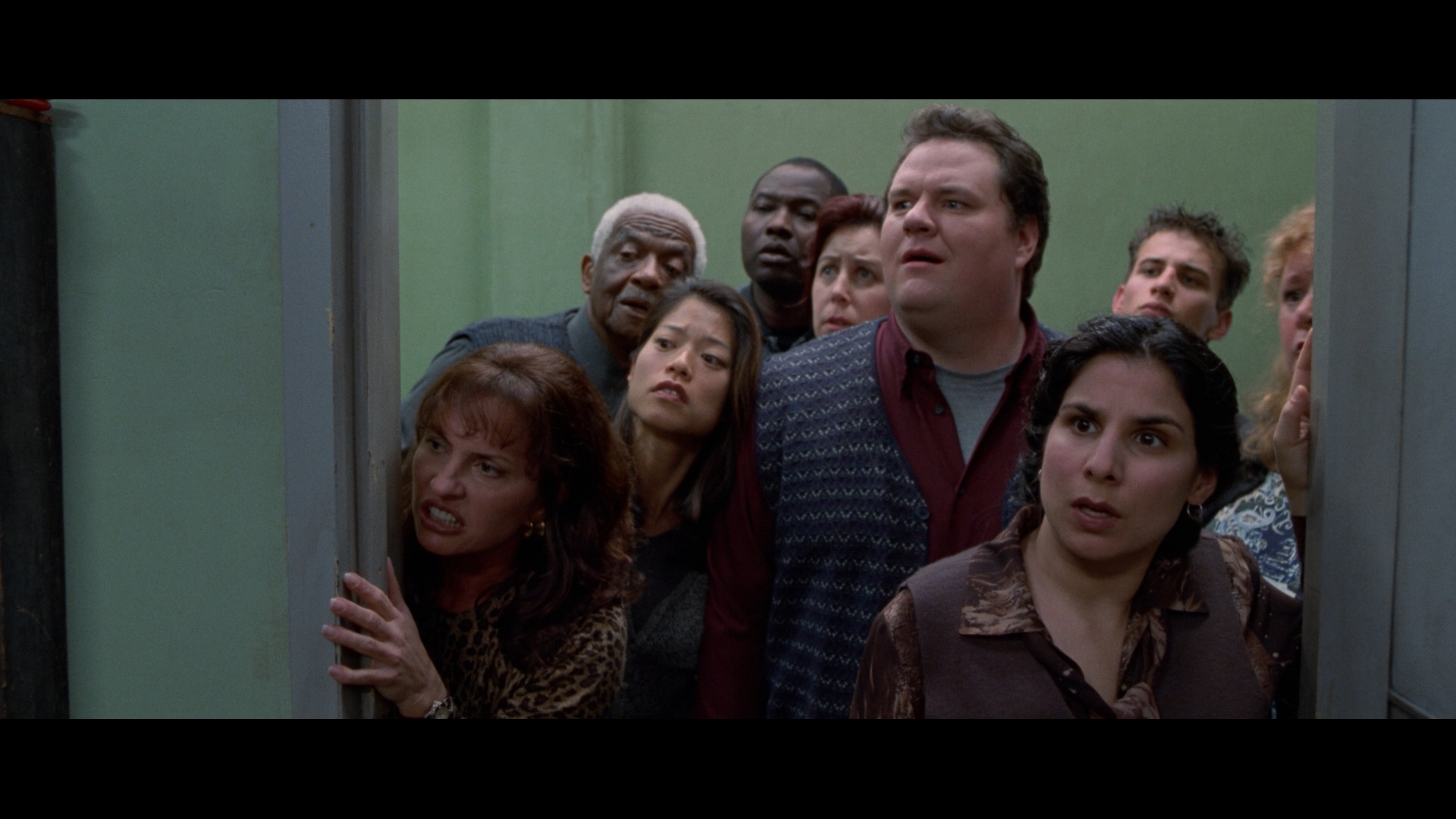 great showcase for some of the material that had be altered to get that PG-13, mainly one memorable death sequence that plays
great showcase for some of the material that had be altered to get that PG-13, mainly one memorable death sequence that plays 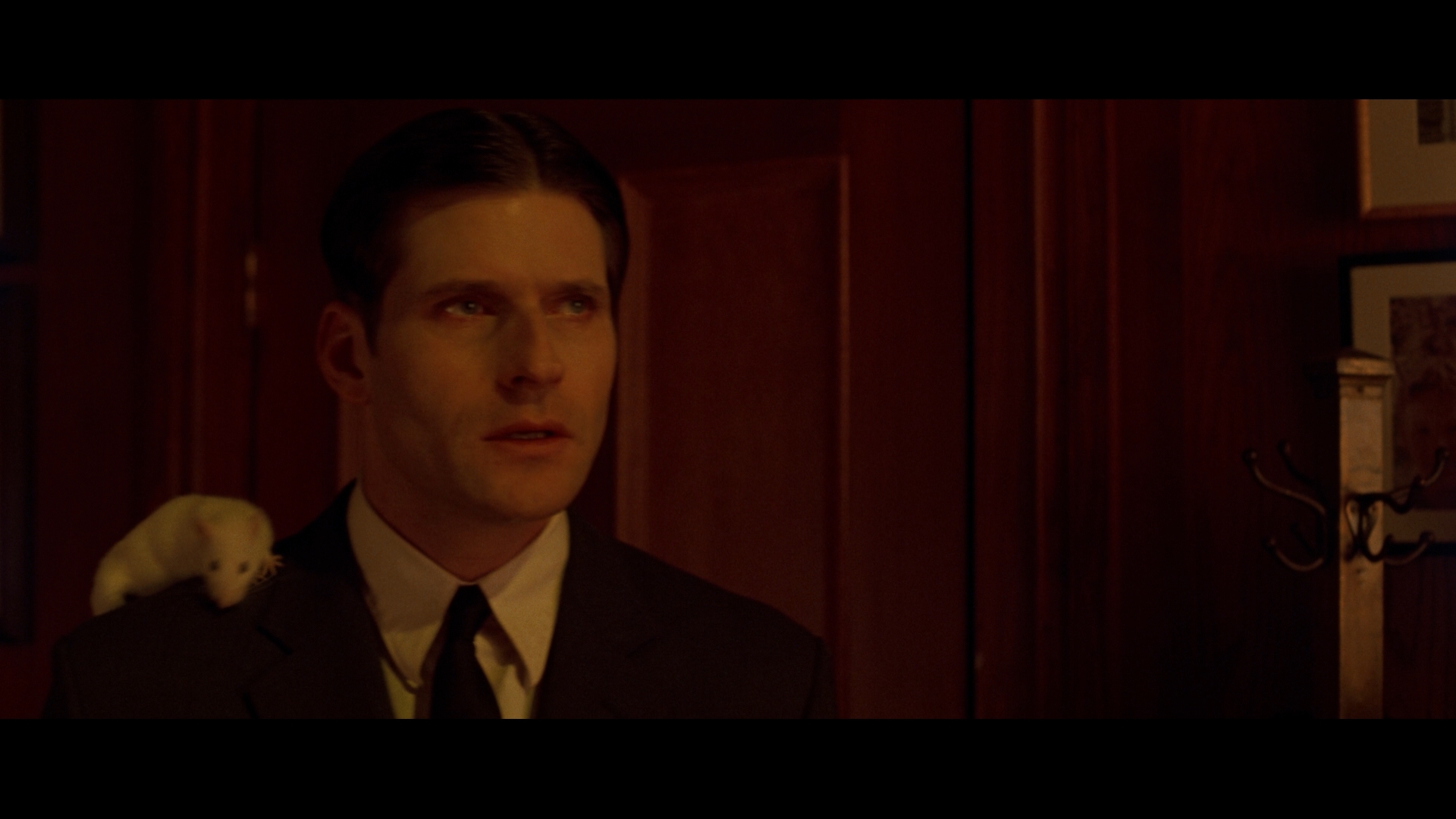 better here, and the original, more faithful ending that was changed after test screenings. (It was also supposed to close with Pearl Jam's "Rats," which was wisely scrapped somewhere along the line.) A batch of raw behind-the-scenes footage and interviews conducted for the film's press kit (29m45s) is a good sampling of bite-sized tidbits from the set, and you also get a batch of TV spots (3m46s) and the very, very 2003 theatrical trailer (jarringly scored to Smashing Pumpkins and touting "America Online Keyword: Willard") in full frame SD providing a peek at how the unmasked Super 35 framing looks. On to the new stuff, "The Road to Willard" (79m48s) is a sprawling, career-spanning interview with Morgan from his start with the excellent The Boys Next Door on through his watershed TV work, his move to features, and the difficulty transitioning back due to major changes in the interim. He's very funny and candid including some funny turns of phrase about his encounters with various executives, especially the segment at DreamWorks. He also chats a bit about some prospective casting choices to star in this film like Jack Black, Jason Schwartzman, Mark Ruffalo, Macaulay Culkin, and Joaquin Phoenix, all of which are fascinating to contemplate. Then McLachlan gets his turn in "Destination Willard" (45m53s), also charing his career course from a fervent cyclist to an ace cameraman with stops along the way including stints on shows like MacGyver, his more recent gig with Game of Thrones, and his time with the X-Files crowd including Millennium. Finally, "The Rat Trainer's Notebook" (11m18s) compiles some very colorful rat training footage from Boone's Animals of Hollywood showing the furry little thespians hard at work running all over wooden sets and dummies.
better here, and the original, more faithful ending that was changed after test screenings. (It was also supposed to close with Pearl Jam's "Rats," which was wisely scrapped somewhere along the line.) A batch of raw behind-the-scenes footage and interviews conducted for the film's press kit (29m45s) is a good sampling of bite-sized tidbits from the set, and you also get a batch of TV spots (3m46s) and the very, very 2003 theatrical trailer (jarringly scored to Smashing Pumpkins and touting "America Online Keyword: Willard") in full frame SD providing a peek at how the unmasked Super 35 framing looks. On to the new stuff, "The Road to Willard" (79m48s) is a sprawling, career-spanning interview with Morgan from his start with the excellent The Boys Next Door on through his watershed TV work, his move to features, and the difficulty transitioning back due to major changes in the interim. He's very funny and candid including some funny turns of phrase about his encounters with various executives, especially the segment at DreamWorks. He also chats a bit about some prospective casting choices to star in this film like Jack Black, Jason Schwartzman, Mark Ruffalo, Macaulay Culkin, and Joaquin Phoenix, all of which are fascinating to contemplate. Then McLachlan gets his turn in "Destination Willard" (45m53s), also charing his career course from a fervent cyclist to an ace cameraman with stops along the way including stints on shows like MacGyver, his more recent gig with Game of Thrones, and his time with the X-Files crowd including Millennium. Finally, "The Rat Trainer's Notebook" (11m18s) compiles some very colorful rat training footage from Boone's Animals of Hollywood showing the furry little thespians hard at work running all over wooden sets and dummies. ![]()